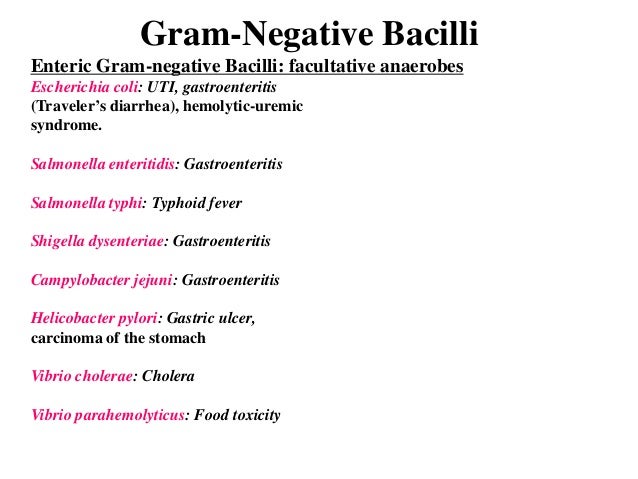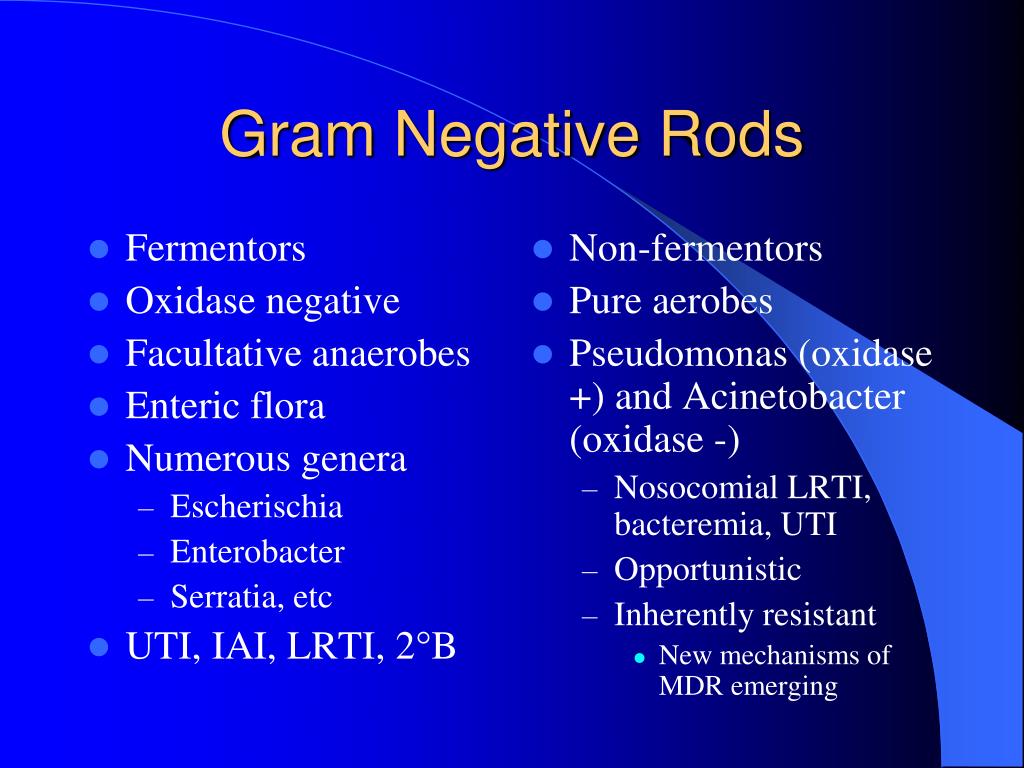

One study 35 reported anemia (17.6%), thrombocytopenia (12.8%), and neutropenia (2.0%) associated with linezolid use. Because of frequent myelosuppression, complete blood counts should be monitored for treatment courses > 14 days. Treatment and prevention of Yersinia enterocolitica and Yersinia pseudotuberculosis infection. This agent is well absorbed orally but considerably more expensive than the older oral antibiotics previously mentioned. Linezolid is available in both intravenous and oral formulations and is active against aerobic gram-positive organisms, including MRSA and vancomycin-resistant enterococcus.
#Antibiotics to treat gram negative rods skin
A pooled review 34 of 349 patients with diabetes receiving either linezolid or vancomycin for complicated skin and skin structure infections observed comparable rates of clinical success (74 and 71%, respectively). Linezolid, an oxazolidinone, has been studied in complicated skin and skin structure infections including DFIs.


Because it has no demonstrated clinical superiority over other well-established treatment choices, empiric fluoroquinolone therapy should be reserved for β-lactam–allergic patients. For example, one study using moxifloxacin 6 included only 78 DFIs from among 617 patients enrolled in the original study. Both studies included patients with DFIs, but these were smaller subsets within larger groups with skin and skin structure infections. In two trials, 6, 7 moxifloxacin monotherapy was shown to be clinically noninferior to a regimen consisting of initial piperacillin-tazobactam therapy with a sequential switch to oral amoxicillin-clavulanate. For the subset of 54 patients with DFIs, a clinical success rate of 69.2% for levofloxacin and 57.1% for ticarcillin-clavulanate/amoxicillin-clavulanate was observed. 27 compared levofloxacin in the treatment of complicated soft tissue infections to ticarcillin-clavulanate followed by oral amoxicillin-clavulanate. Most of the published fluoroquinolone DFI data have been derived from smaller subsets of patients within larger studies of skin and skin structure infections.


 0 kommentar(er)
0 kommentar(er)
